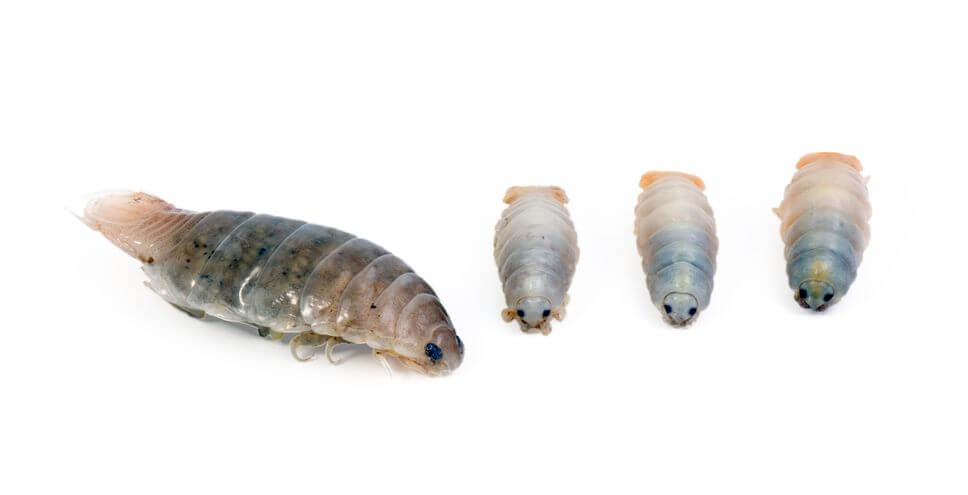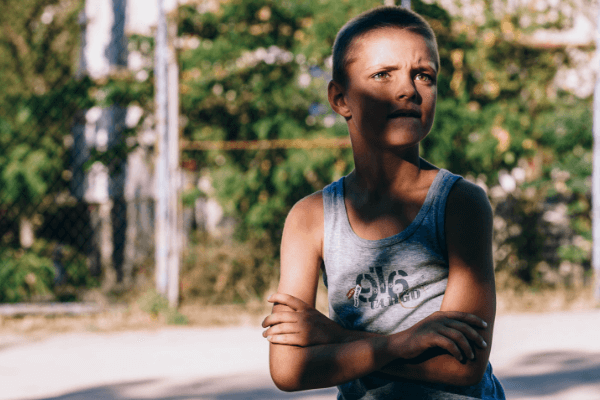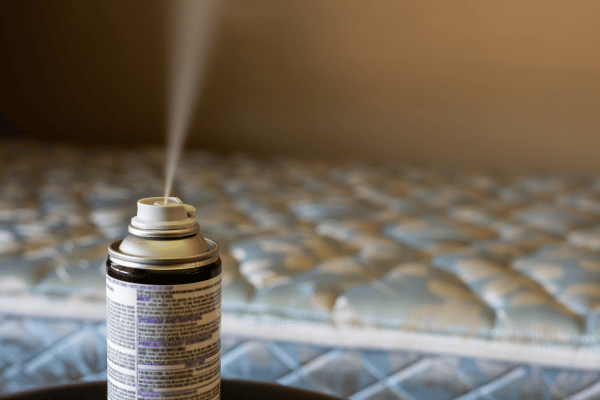Sand Fleas Treatment
This post may contain affiliate links so I earn a commission.
The topic of sand fleas treatment can be a little complicated because there are many different creatures called sand fleas.
Often mistakenly, but the treatment for what may be sand fleas and sand flea bites is something worth knowing, especially if it will get rid of those itchy red reminders.
Maybe you’ve been at the beach or even just in your backyard with sandy-soil and you’ve suddenly developed welts that feel like bites.
I remember as a kid I buried my brother in the sand at a local beach.

You know, similar to when you bury someone up to their neck in beach sand?
Well, the next day my brother was covered in small, itchy, red bites.
I can still remember my mom telling me how he was bit by sand fleas.
Sand fleas?
Maybe – but let’s not be hasty.
There is a lot of misinformation that gets thrown around and the label of "sand flea" is slapped onto many small biting creatures, but what are sand fleas really and do you need a sand fleas treatment?
Sand Fleas Aren't Really Fleas At All
Sand fleas are crustaceans, which is why they’re more likely to be found on the beach.
They don’t jump so you won’t find sand fleas on dogs and cats, which is why you won’t need to worry about any sand flea treatments for pets.

You also don’t really need to treat your home for them unless you live near the beach.
Do Sand Fleas Bite?
While they’re not the type of flea you’re going to find hitching a ride home on your dog and infesting your home, sand fleas can and will bite.
When the temperatures drop during the later hours of the day and early into the night, or during cool or rainy weather, sand fleas become more active and aggressive in their search for food.
They come up from their sandy hides and have been known to chomp on unsuspecting beach goers, dogs included.

You don’t need to be worried about sand fleas on your dog or even having to use a sand fleas treatment, but if you want to avoid getting some irritating bites, arriving to the beach midday and leaving before late afternoon as well as avoiding the beach on cooler days all together will help you to stay out of the painful pincers of angry sand fleas.
Most bites occur on the feet, ankles and the backs of legs this is because beach goers often walk through the waves and sit in the sand and surf while visiting the beach.
Even though sand fleas have a relatively weak bite, these positions offer some of the most sensitive flesh for their mouths to clamp onto, which can result in some irritating and itchy bites.
How To Discourage Sand Flea Bites - Sand Fleas Treatment
If you’re sure sand fleas are what’s biting you, it’s not too hard to take some preventative measures when heading out to the beach.
However, this doesn’t necessarily mean you need some specific type of sand fleas treatment.
Wearing socks or shoes to the beach will help to guard you from the bite of sand fleas as they’re not strong enough to bite through fabric.
Alternatively, you might apply some insect repellents when heading out to the beach.
This may be your greatest weapon in combating sand fleas - allowing you to avoid treatments for sand fleas and their bites.

Using a combination of insect repellents as well as cactus juice can be a great way to keep yourself from having to treat sand flea bites.
Don’t sit in the surf.
It might be tempting to sit in the crashing waves but unless you’re looking to have your legs bit up by these little crustaceans, it’s best to not sit directly on the sand.
Laying down a beach towel to sit on will help to spare you from some sand flea bites, but it’s recommended to sit in a beach chair to avoid those pesky little sand fleas and their irritating bites all together.
Are Sand Fleas Harmful?
No, sand flea bites are not harmful.
Although they might be uncomfortable and as irritating as any other sort of bite, they’re not medically significant.
While the sand fleas in the United States are relatively harmless, there are other species of sand fleas else where in the world which aren’t so innocent and do pose a small risk to humans when not treated medically.
A species of sand flea in Africa is known for the females burrowing into the feet of an unsuspecting passersby where she begins laying eggs beneath the skin.

This can lead to some serious and devastating medical consequences for the victim stemming from infections.
This tends to be most common in areas where modern medicine isn’t readily available and infections can wreak havoc on their host.
Thankfully this species of sand flea isn’t wide spread and most sand flea species don’t pose a problem and don’t require medical attention.
You can breathe a sigh of relief knowing you won’t come across this sinister sand flea.
Unless you’re visiting their native home in Africa, you’re unlikely to find them at your favorite beach hangout.
Sand Fleas Treatment - Bites
While medical treatment might be needed in some more serious cases of sand flea bites resulting in infection, for the most part bites can be treated with anti-itch hydrocortisone creams.
Aloe Vera and calamine lotions that can be purchased over the counter from any pharmaceutical section.
Sand fleas treatments are no different than most other common bug bites in most regards.
Other treatments for sand flea bites might include a paste of baking soda and water applied to the inflamed area to help soothe the irritated skin, using medical grade eucalyptus oil can also help to soothe sand flea bites and makes a great addition to any of the sand fleas treatments.
Maybe Sand Fleas Aren't What You Thought?
It’s easy to get mixed up with all the different types of biting creatures that we have in our world so it’s no wonder the sand fleas, with their misleading name, get a lion share of the blame for many bites that occur in sandy areas; near the water or otherwise.
There are a variety of biting insects that might be more to blame for your troubles than the sand flea - and they’re worth investigating to see if they’re the actual cause of your troubles instead of misplacing blame on the sand flea.
Springtails, rock louse, chiggers, sand flies, sea lice, midges, thrips, and fleas that live in sandy areas are all commonly mistakenly called sand fleas.
While these biting (and non-biting) creatures do sometimes resemble fleas, or are fleas and might also inhabit sandy areas, they’re certainly not sand fleas.
They require different courses of action all together and often can be more devastating to your peace of mind and your physical well-being than the bites they create.



